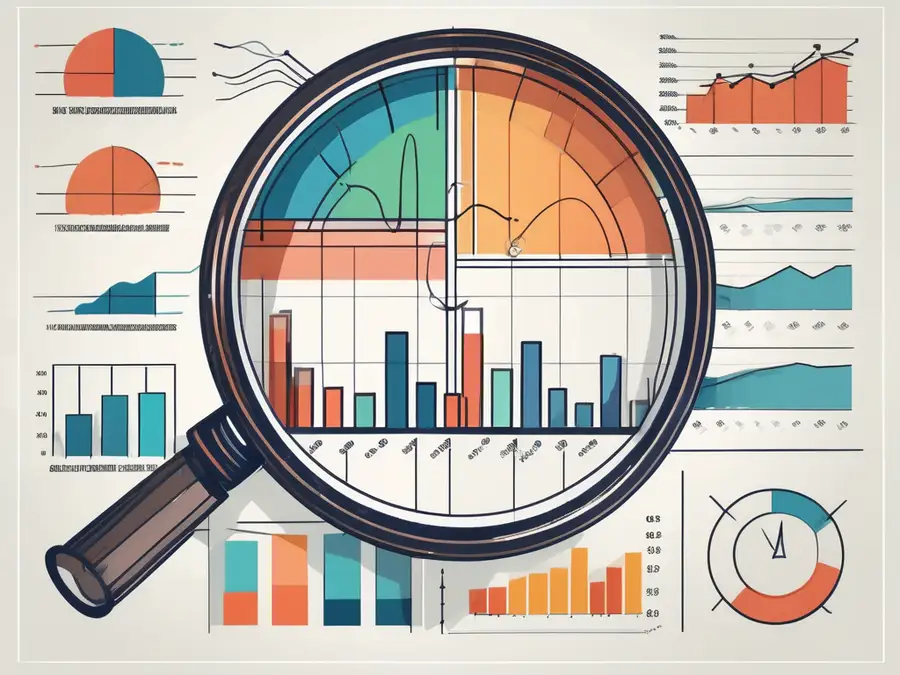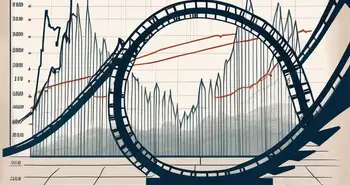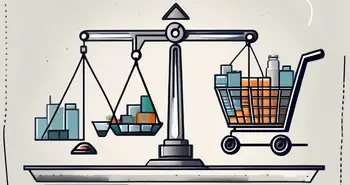The Disparity Index: Understanding Economic Inequality

As an expert in the field of economic inequality, I am here to take you on a journey into the world of the Disparity Index. In this article, we will delve into the concept and factors contributing to economic inequality, understand the role and mathematical approach of the Disparity Index, explore its relationship with economic inequality, take a global perspective on the issue, and discuss ways to address this pressing problem.
Defining Economic Inequality
Let's start by understanding what exactly we mean when we talk about economic inequality. At its core, economic inequality refers to the unequal distribution of resources, wealth, and opportunities among individuals or groups within a society. It manifests itself in various ways, such as income disparities, disparities in access to education and healthcare, and differences in living standards.
Economic inequality is a multifaceted issue influenced by a myriad of factors, ranging from historical and social circumstances to institutional policies and economic systems. Understanding these factors is crucial for developing effective strategies to combat inequality and promote a fairer society.
One significant aspect of economic inequality is the concept of intergenerational wealth transfer. This refers to the passing down of assets and resources from one generation to the next, creating a cycle of advantage or disadvantage. Families with substantial wealth can provide their children with better education, healthcare, and opportunities, perpetuating their privileged position in society. On the other hand, families without such resources may struggle to break the cycle of poverty, leading to persistent inequality across generations.
Furthermore, globalization and technological advancements have also played a role in shaping economic inequality. While globalization has led to increased interconnectedness and economic growth in many parts of the world, it has also contributed to the outsourcing of jobs and the erosion of traditional industries in some regions. This has resulted in job displacement and wage stagnation for certain segments of the population, widening the gap between the wealthy and the less affluent.
Introduction to the Disparity Index
The Disparity Index is a powerful tool used to measure economic inequality. It takes into account various dimensions of inequality, including income, wealth, education, and healthcare. By quantifying the gaps between different groups within a society, the Disparity Index provides a comprehensive picture of disparities that can help inform policies and interventions.
The Disparity Index follows a mathematical approach that involves calculating ratios or indexes based on specific indicators of inequality. These calculations can be used to compare disparities between different regions, countries, or demographic groups.
The Relationship Between Disparity Index and Economic Inequality
The Disparity Index is not just a mere statistical tool; it reflects the very essence of economic inequality. By providing a numerical representation of inequality, it allows policymakers and researchers to assess the magnitude and distribution of disparities. Understanding the relationship between the Disparity Index and economic inequality is crucial for formulating targeted and effective interventions.
Interpreting Disparity Index values requires a nuanced understanding. A higher value indicates a greater level of inequality, while a lower value signifies a more equitable distribution of resources. Monitoring changes in the Disparity Index over time enables us to track progress or regression in reducing economic inequality.
Global Perspective on Economic Inequality
Economic inequality is not limited to any particular region or country; it is a global phenomenon that affects both developed and developing nations. In developed countries, factors such as wage gaps, unequal access to quality education, and discrimination contribute to economic inequality. Developing countries, on the other hand, face additional challenges like widespread poverty and limited resources.
Understanding the specific dynamics of economic inequality in different contexts is vital to designing context-appropriate solutions. By studying the global perspective, we can identify common patterns, learn from successful interventions, and tailor strategies to address the unique challenges faced by different nations.
Addressing Economic Inequality
Now that we have explored the Disparity Index and gained a global perspective on economic inequality, let's focus on addressing this issue. Policy measures play a crucial role in reducing economic inequality. Governments can implement progressive taxation policies, provide affordable access to education and healthcare, and establish social safety nets to support those in need.
Education also plays a pivotal role in mitigating economic inequality. By equipping individuals with the knowledge and skills they need to succeed, we empower them to break the cycle of poverty and improve their socioeconomic status. Investing in quality education for all is an investment in a more equitable and prosperous future.
Personal advice: Throughout my years of researching and working in this field, I have witnessed firsthand the transformative power of education. Providing equal educational opportunities is not just a matter of fairness but also a crucial step towards building a more inclusive society. I encourage policymakers, educators, and individuals to prioritize education and actively participate in efforts to reduce economic inequality.
FAQ – Exploring the Disparity Index
What is the Disparity Index?
The Disparity Index is a tool used to measure economic inequality by quantifying gaps in various dimensions such as income, wealth, education, and healthcare.
How does the Disparity Index reflect economic inequality?
The Disparity Index provides a numerical representation of inequality, allowing policymakers and researchers to assess disparities and track progress or regression in reducing economic inequality.
What are key factors contributing to economic inequality?
Economic inequality is influenced by factors such as historical and social circumstances, institutional policies, economic systems, wage gaps, unequal access to education and healthcare, and discrimination.
How can we address economic inequality?
Policymakers can implement progressive taxation policies, provide affordable access to education and healthcare, and establish social safety nets. Investing in quality education for all also plays a crucial role in mitigating economic inequality.
Why is education important in reducing economic inequality?
Education empowers individuals to break the cycle of poverty and improve their socio-economic status. By providing equal educational opportunities, we can create a more inclusive and equitable society.
In conclusion, understanding economic inequality is fundamental to creating a fairer and more just society. The Disparity Index serves as a powerful tool for measuring and monitoring inequality, enabling policymakers to develop evidence-based strategies. By addressing economic inequality and investing in education, we can work towards a future where equal opportunities and access to resources are not just a dream but a reality for all.
As we strive towards reducing economic inequality and creating a more equitable society, it's essential to empower ourselves with the right tools and opportunities. Morpher.com is at the forefront of this mission, offering a revolutionary trading platform that breaks down traditional barriers to investing. With zero fees, infinite liquidity, and the ability to trade across a multitude of asset classes, Morpher is democratizing trading for all. Whether you're interested in stocks, cryptocurrencies, or even niche markets, Morpher's blockchain-based platform provides a unique and accessible trading experience. Take the first step towards financial empowerment and Sign Up and Get Your Free Sign Up Bonus today, and join the community that's shaping the future of investing.

Disclaimer: All investments involve risk, and the past performance of a security, industry, sector, market, financial product, trading strategy, or individual’s trading does not guarantee future results or returns. Investors are fully responsible for any investment decisions they make. Such decisions should be based solely on an evaluation of their financial circumstances, investment objectives, risk tolerance, and liquidity needs. This post does not constitute investment advice.

Painless trading for everyone
Hundreds of markets all in one place - Apple, Bitcoin, Gold, Watches, NFTs, Sneakers and so much more.

Painless trading for everyone
Hundreds of markets all in one place - Apple, Bitcoin, Gold, Watches, NFTs, Sneakers and so much more.









